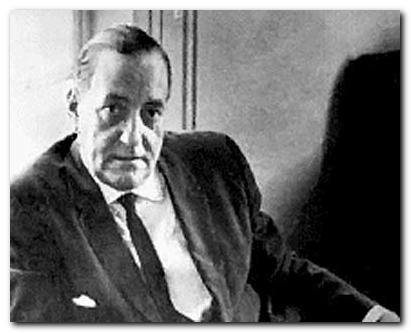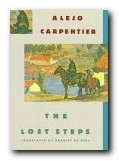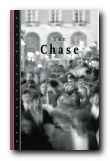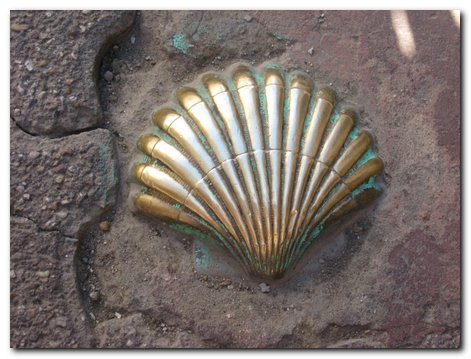tutorial, commentary, study resources, plot, and web links
The Road to Santiago (El camino de Santiago) was written in 1948 but first appeared in the collection Guerra del Tiempo published in Havana, Cuba, in 1963. The Santiago in question is Santiago de Compostella, the capital of Galicia in north western Spain, a city named after Saint James, which has been a traditional destination for Catholic pilgrims since the ninth century.
The Road to Santiago – critical commentary
Carpentier has claimed that the inspiration for the story was initially sparked by his identification of a European individual named Juan in Cuba’s public records – that is, the novelty or apparent incongruity of discovering a Flemish name in a Caribbean setting.
Upon finding, in an old list of residents of Havana in the sixteenth century, the name of Juan of Amberes, ‘who played the drum when a ship was sighted’, it occurred to me that it would be amusing to write an imaginary biography of this character who left no further trace of his existence
But in fact it is quite clear that the story is less to do with the biography of an individual, and much more to do with the historical conditions involved in the process of colonisation and European expansion in Latin America. Carpentier emphasises very critically the miserable conditions which obtained in the West Indies, and he mocks the myths of ‘streets paved with gold’ that were pedalled as part of the expansionist ideology.
However, his critical vision also includes the European religious intolerance (the Spanish Inquisition, for instance) which was a factor in driving some people to seek salvation elsewhere.
Historical background
Santiago is the Spanish name for what is known in English as Saint James, whose symbol was the scallop shell (or ‘cockle shell’). Pilgrims to his shrine often wore that symbol attached to their hats or clothes. The French for a scallop is coquille St. Jacques, which gives its name to that dish.
The legend is that St. James preached the gospel in Spain as well as in the Holy Land, and that after his martyrdom his disciples carried his body by sea to Spain, for burial at Santiago de Compostella – now the site of pilgrimage. The Way of St. James is a network of routes that cross Western Europe and arrive at Santiago through Northern Spain. However, unless one believes in the existence of miracles, James’ presence in Spain is not logically possible – but the myth persists.
Cultural echoes
The most obvious literary connection in this story is with Daniel Defoe’s Robinson Crusoe (1719), another narrative which explores the process of colonial exploration and expansion – and one based upon the real-life adventures of Alexander Selkirk who survived four years voluntarily stranded on an island in the south Pacific Ocean.
Crusoe endures all sorts of terrible hardships on his island, as does Juan when he escapes to the other side of Cuba, but he eventually meets other people when they visit his island. Crusoe does not acquire concubines, but he does have a Negro slave (‘Friday’) and very conveniently finds a ship stranded on a coral reef just off shore which is his principal means of survival.
Carpentier keeps these literary echoes light, but it is interesting to note the congruence of the two narratives. In fact, just as Juan goes back to further expeditionary adventures at the end of the story with the second Juan the Pilgrim, so Crusoe went on to further travels after the success of his first Pacific adventure. Seventeen years’ isolation did not deter him from making further ‘explorations’, as Defoe was keen to record in his Further Adventures.
The Road to Santiago – study resources
The Road to Santiago is one of five stories contained in the collection The War of Time. The other four stories are Right of Sanctuary (1967), Journey Back to the Source (1944), Like the Night (1947), and The Wise Men (1967).
![]() The Road to Santiago – at Amazon UK – (text in English)
The Road to Santiago – at Amazon UK – (text in English)
![]() El camino de Santiago – at Amazon UK – (Text in Spanish)
El camino de Santiago – at Amazon UK – (Text in Spanish)
![]() The Road to Santiago – at Amazon US – (Text in English)
The Road to Santiago – at Amazon US – (Text in English)
![]() El camino de Santiago – at Amazon US – (Text in Spanish)
El camino de Santiago – at Amazon US – (Text in Spanish)
The Road to Santiago – plot summary
Part 1. In sixteenth century Antwerp, soldier and drummer Juan sees potted orange trees being unloaded from a ship. He thinks the exotic nature of the goods suggest an imported gift for a nobleman’s mistress. He also notices a diseased rat leaving the ship and swimming ashore.
Part 2. The ship has brought the plague from its stopover in Las Palmas. Infected and desperately ill, Juan regrets his soldier’s life, has visions in his delirium, and on recovery vows to go on a holy pilgrimage to Santiago de Compostella.
Part 3. He becomes devout, embraces poverty, and walks through northern France, joining other pilgrims on the journey south. When they reach Bayonne he shakes off the remnants of his fever, feels restored in spirits, and starts drinking wine again.
Part 4. Arriving in Burgos he is distracted by the pleasures and entertainments of the great Fair. A huckster West Indian relates marvellous tales of wealth and plenty to be had in the New World. Juan finds reasons to believe these tall tales.
Part 5. Juan abandons his pilgrimage and his appearance of poverty, embracing instead the rumours of an easy life and instant riches pedalled by the West Indian. He travels to Seville and joins an expeditionary fleet which eventually reaches Cuba.
Part 6. In Havana Juan discovers nothing but poverty, degradation, and political corruption. There is no gold at all, and after killing someone in an argument he is forced to escape to the other side of the island, where he is captured by a Calvinist and his slave Golomon who are in flight from religious persecution.
Part 7. The Calvinist relates tales of brutal conflicts, but his slave Golomon has access to escaped female slaves, two of whom become Juan’s concubines.
Part 8. Juan falls ill again, feels homesick, and develops cravings for European food and wine. The Calvinist and Golomon have their own separate yearnings for ‘home’. Juan develops a fever, but on recovery discovers a ship stranded on a nearby reef.
Part 9. They sail back to Europe on the ship, and on arriving at the Canary Isles are met with suspicion and threatened with religious persecution. Juan is released, but other are taken away to be burned alive in the auto-da-fe of the Inquisition.
Part 10. Juan returns to Burgos and re-enacts the life of the West Indian who first set him on his journey of adventure. He meets a pilgrim called Juan from Flanders and tells him all about the wondrous phenomena of the New World. Juan the new pilgrim dismisses these claims and insists that new sources of ‘gold’ have been discovered. The ‘old’ Juan argues that the lawlessness of the colonies creates new opportunities for acquiring wealth for those who are enterprising.
Part 11. The two Juans continue their journey south, and with savage religious persecution in the background, they reach Seville and embark on another expeditionary force to the New World.

Alejo Carpentier – other works
 The Lost Steps (1953) is a story told twice. A disillusioned north-American musicologist flees his empty existence in New York City. He takes a journey with his mistress to one of the few remaining areas of the world not yet touched by civilization – the upper reaches of a great South American river (which we take to be the Amazon). The novel describes his search, his adventures, the revival of his creative powers, and the remarkable decision he makes about his life in a village that seems to be truly outside history. This novel offers a wonderful evocations of Latin America from the founder of ‘Magical Realism’.
The Lost Steps (1953) is a story told twice. A disillusioned north-American musicologist flees his empty existence in New York City. He takes a journey with his mistress to one of the few remaining areas of the world not yet touched by civilization – the upper reaches of a great South American river (which we take to be the Amazon). The novel describes his search, his adventures, the revival of his creative powers, and the remarkable decision he makes about his life in a village that seems to be truly outside history. This novel offers a wonderful evocations of Latin America from the founder of ‘Magical Realism’.
Buy the book at Amazon UK
Buy the book at Amazon US
 The Chase is set in Havana of 1956 where Batista’s tyrannical rule serves as the backdrop for the story of two young men whose lives become intertwined with the prostitute, Estrella. An anonymous man flees a team of shadowy, relentless political assassins, and ultimately takes refuge in a public auditorium during a performance of Beethoven’s Eroica Symphony. This story is particularly interesting because of its multiple, disjointed types of narration and its polyphonic structure. It also has the tight thematic unities of the classic novella form.
The Chase is set in Havana of 1956 where Batista’s tyrannical rule serves as the backdrop for the story of two young men whose lives become intertwined with the prostitute, Estrella. An anonymous man flees a team of shadowy, relentless political assassins, and ultimately takes refuge in a public auditorium during a performance of Beethoven’s Eroica Symphony. This story is particularly interesting because of its multiple, disjointed types of narration and its polyphonic structure. It also has the tight thematic unities of the classic novella form.
Buy the book at Amazon UK
Buy the book at Amazon US
Alejo Carpentier web links
Carpentier at Wikipedia
Background, biography, magical realism, major works, literary style, further reading
Carpentier at Amazon UK
Novels, criticism, and interviews – in Spanish and English
The Kingdom of this World
Lecture by Rod Marsh – University of Cambridge
Carpentier at Internet Movie Database
Films and TV movies made from his novels
Carpentier in Depth
Spanish video documentary and interview with Carpentier (1977)
© Roy Johnson 2015
More on Alejo Carpentier
More on the novella
More on literary studies
More on short stories
